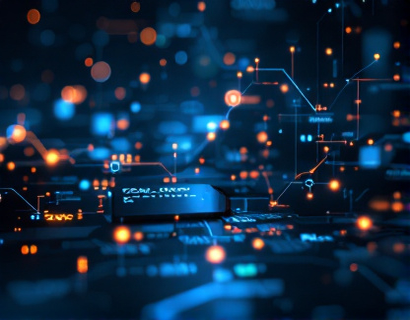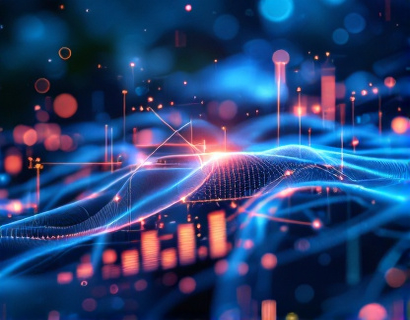Ucosystem Simplified: A Beginner's Guide to Navigating Interconnected Complexity and Unlocking Its Benefits
The Ucosystem, a term that encapsulates the intricate web of interconnected systems and technologies, can seem overwhelming for beginners. This guide aims to demystify the Ucosystem, breaking down its complex components and highlighting key benefits. By the end of this article, you will have a clearer understanding of how these interconnected elements work together and how you can effectively navigate and leverage them.
Understanding the Basics of the Ucosystem
The Ucosystem is not a single entity but a network of systems, platforms, and technologies that interact and influence each other. At its core, it represents the convergence of various digital and physical systems, creating a dynamic environment where data, processes, and services are interconnected. To grasp this concept, let's start with the fundamental components:
- Data: The lifeblood of the Ucosystem, data is collected, processed, and analyzed to derive insights and drive decisions.
- Platforms: These are the foundational layers that enable the creation, deployment, and integration of various services and applications.
- Devices: From smartphones to IoT devices, these are the physical and digital tools that interact with the Ucosystem.
- Users: Individuals and organizations that engage with the Ucosystem, providing input and benefiting from the services offered.
Each of these components plays a crucial role in the Ucosystem, and their interactions create a complex yet powerful environment. Understanding how they work together is essential for navigating this landscape effectively.
Key Benefits of the Ucosystem
The Ucosystem offers numerous benefits that can transform the way individuals and organizations operate. Here are some of the most significant advantages:
1. Enhanced Efficiency: By automating processes and streamlining workflows, the Ucosystem reduces manual tasks and increases productivity. For example, automated data collection and analysis can provide real-time insights, allowing for quicker decision-making.
2. Improved Collaboration: The interconnected nature of the Ucosystem facilitates seamless communication and collaboration among different stakeholders. Tools and platforms enable real-time sharing of information and resources, breaking down silos and fostering a more cohesive environment.
3. Innovation and Creativity: The Ucosystem encourages the integration of diverse technologies and services, leading to innovative solutions and new business models. For instance, combining AI with IoT can result in smart cities that optimize resource usage and enhance quality of life.
4. Personalization: With advanced data analytics, the Ucosystem allows for highly personalized experiences. Businesses can tailor products and services to individual preferences, improving customer satisfaction and loyalty.
5. Scalability: The modular nature of the Ucosystem enables organizations to scale their operations easily. As needs grow, additional resources and services can be integrated without significant overhauls.
Navigating the Ucosystem: Practical Steps
Navigating the Ucosystem can be challenging, but with a structured approach, you can effectively leverage its benefits. Here are some practical steps to get started:
1. Educate Yourself: Begin by learning the fundamental concepts and terminology associated with the Ucosystem. Understanding key terms like data, platforms, devices, and users is crucial for effective navigation.
2. Identify Your Goals: Clearly define what you aim to achieve by engaging with the Ucosystem. Whether it's improving efficiency, enhancing collaboration, or driving innovation, having clear objectives will guide your actions.
3. Choose the Right Tools and Platforms: Select tools and platforms that align with your goals and complement each other. Consider factors like compatibility, scalability, and user-friendliness when making your choices.
4. Start Small: Begin with pilot projects or small-scale implementations to test the waters. This approach helps you understand the dynamics of the Ucosystem and refine your strategies before scaling up.
5. Monitor and Adapt: Continuously monitor the performance of your Ucosystem initiatives and be prepared to adapt. The dynamic nature of the Ucosystem requires flexibility and a willingness to make adjustments based on feedback and changing conditions.
Case Studies: Real-World Applications of the Ucosystem
To better understand the practical applications of the Ucosystem, let's explore a few real-world examples:
1. Smart Cities: Cities like Barcelona have integrated various systems such as traffic management, public Wi-Fi, and energy monitoring to create a more efficient and sustainable urban environment. The Ucosystem in smart cities enhances the quality of life for residents and visitors alike.
2. Healthcare: In the healthcare sector, the Ucosystem enables the integration of electronic health records, telemedicine, and wearable devices. This integration improves patient care, streamlines operations, and provides valuable insights for medical research.
3. Retail: Retailers use the Ucosystem to create omnichannel experiences, combining online and offline shopping. By leveraging data analytics and IoT, they can offer personalized recommendations and optimize inventory management.
These examples demonstrate how the Ucosystem can transform various industries, leading to significant improvements and innovations.
Challenges and Considerations
While the Ucosystem offers numerous benefits, it also presents several challenges that need to be addressed:
1. Data Privacy and Security: With the increased collection and sharing of data, ensuring privacy and security is paramount. Organizations must implement robust security measures and comply with regulations to protect sensitive information.
2. Interoperability: Ensuring that different systems and platforms work seamlessly together can be challenging. Standardization and open protocols are essential to facilitate interoperability.
3. Complexity Management: The complexity of the Ucosystem can be overwhelming. Effective governance and clear communication are crucial to manage this complexity and ensure that all stakeholders are aligned.
4. Change Management: Adapting to the Ucosystem requires a cultural shift within organizations. Leadership must foster a mindset of continuous learning and adaptability to embrace the changes brought by the Ucosystem.
Future Trends in the Ucosystem
As technology continues to evolve, the Ucosystem will undergo significant transformations. Here are some key trends to watch:
1. Increased AI Integration: Artificial intelligence will play a more prominent role in the Ucosystem, enhancing automation, predictive analytics, and decision-making processes.
2. Edge Computing: With the growth of IoT devices, edge computing will become more prevalent, processing data closer to the source to reduce latency and improve efficiency.
3. Blockchain and Decentralization: Blockchain technology can enhance security and transparency in the Ucosystem, enabling decentralized applications and trustless transactions.
4. Sustainability: The Ucosystem will increasingly focus on sustainability, with initiatives aimed at reducing environmental impact and promoting eco-friendly practices.
Staying informed about these trends will help you stay ahead in the Ucosystem and capitalize on emerging opportunities.
Conclusion
Navigating the Ucosystem may seem daunting at first, but with a solid understanding of its components and benefits, you can effectively leverage this interconnected landscape. By following the practical steps outlined in this guide and staying informed about future trends, you can unlock the full potential of the Ucosystem. Embrace the complexity, stay adaptable, and harness the power of interconnected systems to drive success in your personal and professional endeavors.










































